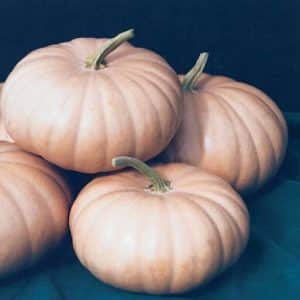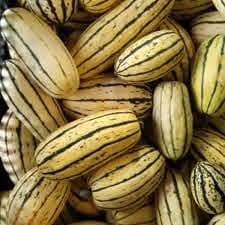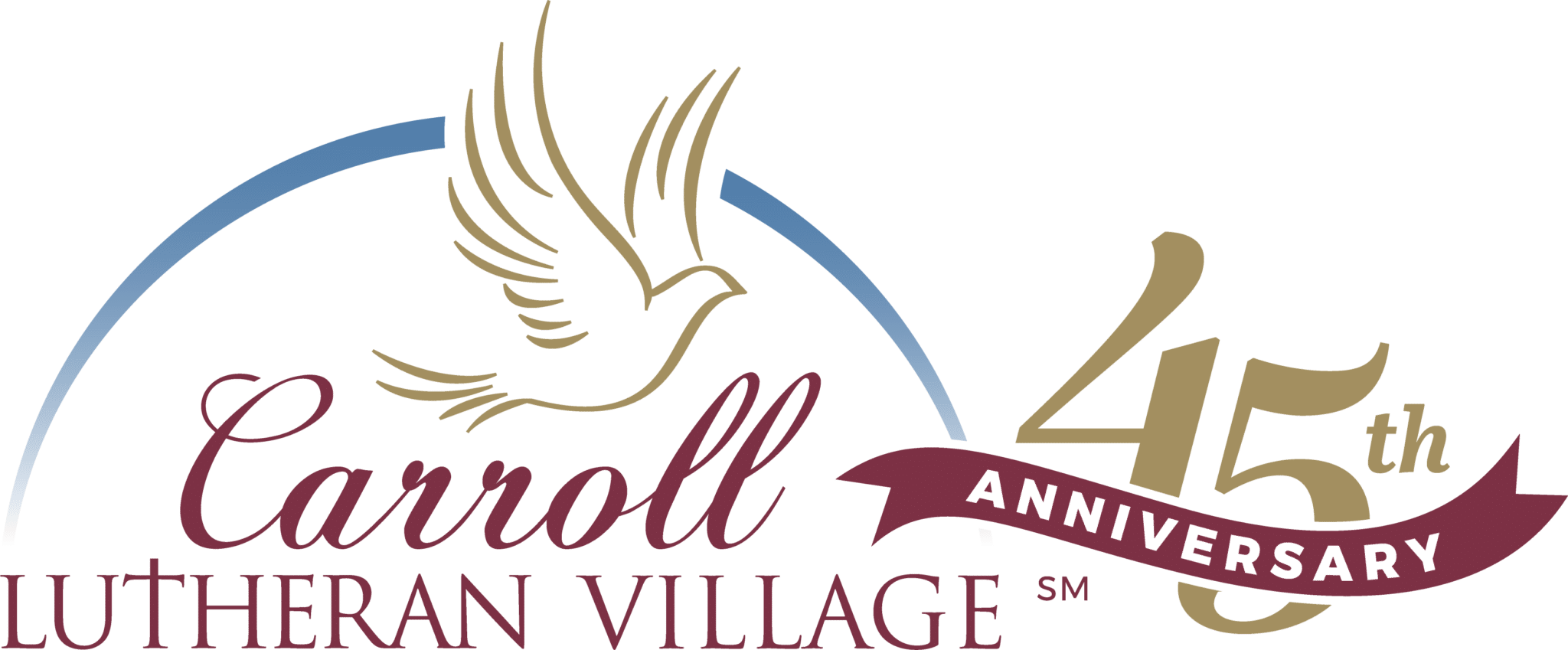Learn about seasonal winter vegetables from our Dietician Carol Valle, including their nutritional value and how to cook them.
Hi, I am Carol Valle, Carroll Lutheran Villages registered dietician, and this month we are going to talk about winter vegetables. I have set a few out in front of me, but we are going to focus on those that are available readily at the store and ones we use here on campus to make you something delicious to eat. We are going to start out by showing you a few slides from a presentation, that we would typically present in person, and then talk in detail about the nutrition information about some of them.
Super Squash! A Powerhouse of Nutrition
Scientists believe that squash varieties span the entire globe and many squashes, that we call “gourds,” are still used for bowls, vessels and music instruments. As early as 1500 A.D., squash started appearing in new world paintings after Christopher Columbus arrived. In 1550, melons were discovered, and in 1600 A.D. Europeans started to come across them in their travels and brought the seeds back to Europe even though squash was already native there. In 1816, Elizabeth Skinner felt that if you pounded the seeds, rubbed it into your skin, and sat in the sun it would “taketh away freckles and all spots!”
Squash is a FRUIT??
Botanists call squash a fruit because it develops from a flower. There are two types of squash: summer, which is thin skinned like zucchini, and winter, which is thick skinned like pumpkin. We all think of pumpkin pie around Thanksgiving time. The Pilgrims hollowed out pumpkins, filled them with milk, honey and spices, and then baked them at the first Thanksgiving.
Squash is considered one of the most nutrient-dense foods you can eat. It is a great source of vitamin A (beta-carotene), vitamin C, B vitamin complex, copper, magnesium, potassium and manganese. It is very high in soluble fiber, which is really good for regulating your blood sugars and cholesterol levels. As a fruit, squash is naturally fat and cholesterol-free. Almost all of the calories come from carbohydrates in squash, very little from protein, and even though it is a carbohydrate-based food it has a low glycemic index which means it does not contribute to significantly raising your blood sugars.
Squash versus Pumpkins
As you can see here, I have some pumpkins, I have some squash, and actually have some brussels sprouts, too, since we are going to talk about winter vegetables. All pumpkins are considered winter squash. They are planted in the summer but have a very long growing period. They can come in all different sizes and can be considered edible or purely decorative.
Not all squash seeds are edible but pumpkin seeds are. And a half a cup of roasted pumpkin seeds gives you about four grams of fiber.
Edible Pumpkins

Long Island Cheese Pumpkin
One edible pumpkin is a pie pumpkin. It is a nice sweet one; they tend to be smaller and round. They can be used for pies, or you can dice them and sauté them. I found a pumpkin when I was researching online, called a Long Island Cheese pumpkin, named because it not only grows on Long Island but also looks like a wheel of cheese and apparently, they’re really good to eat.
White pumpkins are relatively new and are also excellent to eat. If you cut into them, the meat is a bright orange. However, most people use them for decorations.
Decorative Pumpkins
Field pumpkins are the great big ones, and they’re usually used for decorating or making jack-o’-lanterns. I found a record that the heaviest pumpkin recorded in the United States weighed 2,300 pounds. Field pumpkins are very watery and stringy, and not very good to eat. Pumpkins are, of course, associated with Halloween. I found pumpkins named “knucklehead,” “warty goblin,” “blue doll,” and “baby bill.” Very small pumpkins are called “jack be littles,” they are very useful for decorating along with gourds. Gourds are definitely not edible. They are a form of squash, but grown primarily for decorative purposes. They are considered lumpy and bumpy and are bitter tasting.
Edible Squash
One of the more common, well known squash is the acorn squash. Mostly dark green, it has little splotches of orange and yellow. They’re very nutrient-dense when you compare them with some of the other types of squash. They have high levels of folate, high levels of calcium, magnesium and potassium. One cup of the cooked acorn squash has more potassium than two bananas and are high in fiber. Acorn squash can be roasted, baked, steamed, mashed or sautéed.
One way is to cut it in half, scoop out the seeds, flip it upside down, cook it a little bit in the oven to soften it, stuff it with whatever you want, and then just eat it right out of the shell. It has a sweet nutty taste, and you can scoop out the seeds and roast them. However, pumpkin seeds tend to be a little bit better to eat than squash seeds.
The next squash is the butternut squash. This is the only one that I can truly recognize in the grocery store. This one has a bright orange interior, very few seeds, and it’s relatively easy to peel. This one you just want to slice. You can easily sauté it, roast it, mash it and puree it. The butternut squash is often used in soups because it doesn’t leave those long stringy fibers. It is also delicious in risotto dishes and stuffed in ravioli. Also nutrient rich, it’s a very good source of fiber, vitamin C, vitamin A, as well as B vitamins.
Spaghetti Squash
Spaghetti Squash is one of the lowest caloric squashes. Again, all squashes are fat and cholesterol-free, but they’re not calorie-free. The spaghetti squash is very watery. It’s appropriately named because once it’s cooked, and you take a fork and dig the meat out, it comes out like strands of spaghetti. Because it is low in calories, it is also not as high in vitamin A, vitamin C and fiber as the other ones, and it’s often used as a substitute for pasta. There are only 42 calories in a whole cup of cooked spaghetti squash.
Preparation is easy. Just scoop out the seeds, bake it until it’s tender, and then use a fork to pull it out like long spaghetti noodles. You can toss it with pasta sauce to mimic spaghetti or season with butter, salt, pepper and parmesan cheese to use as a side dish. While it is lower in many vitamins, it is a good source of fiber and some B vitamins.
Delicata Squash

Delicata Squash
The delicata squash is new to me. Small and oblong, they tend to be yellow with green and orange stripes. This is one of the few winter squashes with a thin skin, like your summer zucchini, and is easily peeled. It is dense, and it tastes sweet and kind of nutty. A nice way to cook this is to just cut it into rings, toast it and roast it with some butter, some maple syrup or cinnamon. An easy to cook squash. It’s high in fiber, vitamin C, folate and potassium.
These are just a few of the many winter squashes available. You can store squash for a very long time, up to three or four months, at a time, in a cool dry place. They don’t take well to refrigerating. The delicata needs to be used with in a couple of weeks of buying.
Other Winter Vegetables
There are some other winter vegetables that I wanted to talk about. I didn’t bring examples of them all, but I’ll take about them quickly.
Kale and Carrots and Parsnips, oh my …
Kale is one of your cold-weather vegetables, and it tastes a lot like cabbage when you eat it. It has more of that cruciferous taste, and is very high in fiber, vitamin K, vitamin C and vitamin A. A big bag of kale will last quite a long time in your refrigerator. It is not like your more delicate lettuces that get soft really quickly. Kale is a good example of a winter vegetable that you can stock up on.
Carrots are also considered a winter vegetable. Carrots get sweeter in colder weather, so those that are harvested this time of year, close to the first frost, tend to be much sweeter than the ones you buy in the middle of summer.
Parsnips, which I am not a fan of, are considered a winter vegetable as well.
Collard greens, rutabagas, leeks, spinach, red cabbage and radishes are all other examples of winter vegetables that you can find in your store right now.
Cauliflower
I didn’t bring a head of cauliflower. You all know what cauliflower looks like, but did you know it comes in white, orange, green and purple? Like carrots, the cold weather brings out the sweetness in cauliflower. I did find a good tip about the cauliflower that comes tightly wrapped in plastic. It is recommended that you take off that plastic wrap and just store the head in your refrigerator lightly covered because the plastic wrap causes the cauliflower to rot.
Cauliflower is very high in fiber, vitamin C, folate and potassium. You can boil, steam, roast it and eat it raw. My daughter’s favorite way is to pickle it.
Brussel Sprouts
The last thing I brought to show you are brussels sprouts. Up until a few years ago I did not realize that his is how brussels sprouts grew. I was fascinated when I first was them. I think they are quite cute. They are named after a town in Belgium (Brussels), where they were cultivated way back in the 16th century.
They are a member of the cabbage family and you would know that if you cook them. They are high in fiber, folic acid, and vitamins A, C and K. They grow on stalks, and the buds are the edible sprouts. Peak season is from September to February. I found this one at a local grocery store, but I have seen them in farmer’s markets and grocery stores, all over the place. If you leave them in the ground and just nip off the buds they will re-sprout. The smaller buds are sweeter and taste better than the great big ones.
You would not want to cook a large one, but rather peel off a lot of those outer layers and cut off the end to get a little smaller sprout. You can roast them, sauté them and bake them into a gratin. The other day my husband and I went out to dinner and they had a brussels sprout salad. The brussels sprouts were shaved, and it made a raw brussels sprout salad.
Thank you for tuning in, and be on the lookout for some of our new menu items featuring some of these winter vegetables. We will have a handout at the Bistro with some more information about them and some recipes for you all.
